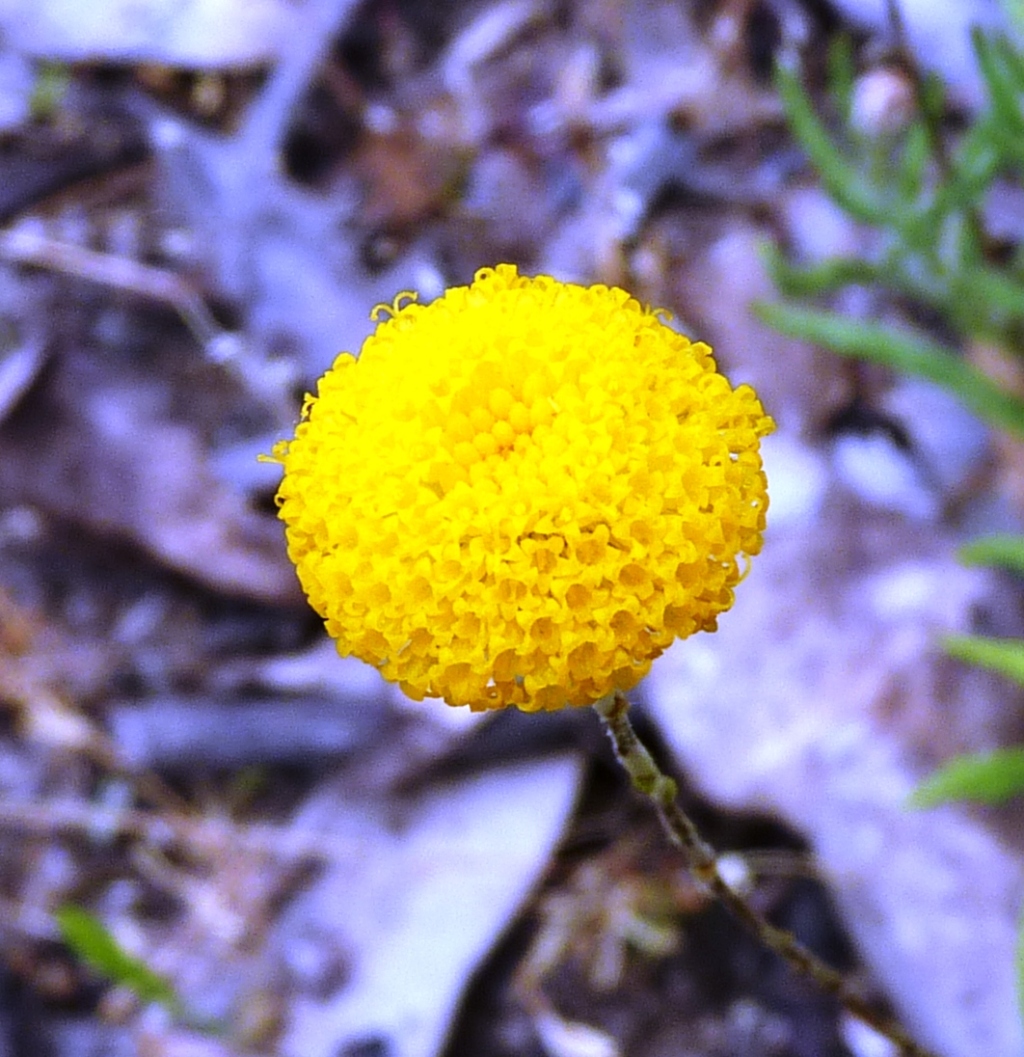Leptorhynchos squamatus subsp. squamatus
Leaves linear, narrow-lanceolate to narrow-oblanceolate, 0.5–6 mm wide, acute. Outer involucral bracts elliptic, dark golden brown at apex. Inner involucral bract margins with simple cilia. Cypsela papillose. Pappus bristles of bisexual florets (6–)8–10(–16), 0.5–1.3 mm wide, those of female florets 0–12, 0.4–1.3 mm wide. Flowers Sep.–Dec.
LoM, MuM, Wim, GleP, Brid, VVP, VRiv, MuF, GipP, OtP, WaP, Gold, CVU, GGr, DunT, NIS, EGU, HSF, HNF, MonT, VAlp. Common in lowland areas, throughout Victoria except in north-west, mostly in grassland, open heathland and woodland, extending to around 1000 m alt. on the Major Mitchell Plateau in the Grampians where it occurs in Eucalyptus pauciflora woodland.
Populations at the upper extent of the altitude range of this subspecies on the Major Mitchell Plateau in the Grampians show some features intermediate between typical L. squamatus subsp. squamatus and the alpine L. squamatus subsp. alpinus (Flann et al. 2002). These Grampians populations possess several diagnostic features of L. squamatus subsp. squamatus such as simple cilia on the inner involucral bract margins, papillae on the cypsela and fewer pappus bristles on the female florets than on the bisexual florets and consequently are included within L. squamatus subsp. squamatus.
 Spinning
Spinning

